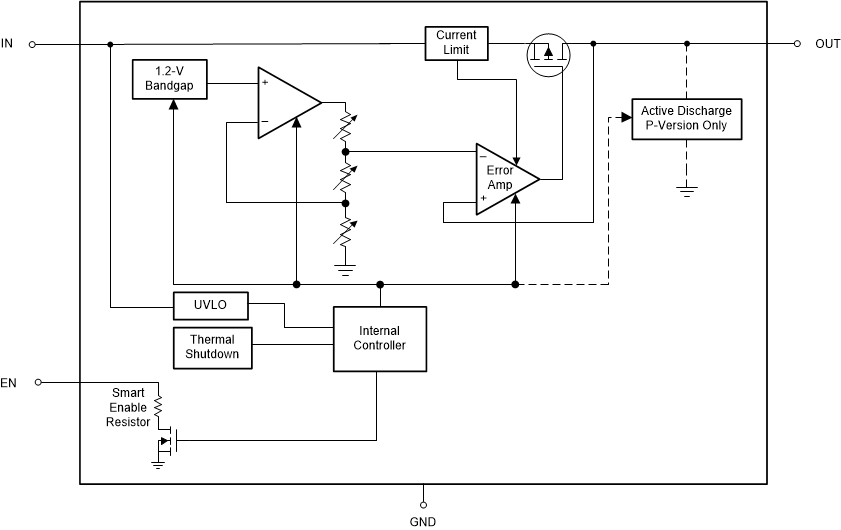TIDUEZ4 May 2021
- Description
- Resources
- Features
- Applications
- 5
- 1System Description
-
2System Overview
- 2.1 Block Diagram
- 2.2 Highlighted Products
- 2.3 Design Considerations
- 3Hardware, Software, Testing Requirements, and Test Results
- 4Design and Documentation Support
- 5About the Author
2.2.2.4 TPS7A03
Key features of this device include:
- Ultra-low IQ: 200 nA (typ), even in dropout
- Shutdown IQ: 3 nA (typ)
- Excellent transient response (1 mA to 50 mA), < 10 μs settling time, 80 mV undershoot
- Packages: 1.0 mm × 1.0 mm X2SON, SOT23-5, 0.64 mm x 0.64 mm DSBGA
- Input voltage range: 1.5 V to 6.0 V
- Output voltage range: 0.8 V to 5.0 V (fixed)
- Output accuracy: 1.5% overtemperature
- Smart enable pulldown
- Very low dropout: 270 mV (max) at 200 mA (VOUT = 3.3 V)
- Stable with a 1 μF or larger capacitor
 Figure 2-9 TPS7A03 Functional Block
Diagram
Figure 2-9 TPS7A03 Functional Block
DiagramThe TPS7A03 is an ultra-low IQ linear voltage regulator that is optimized for excellent transient performance. These characteristics make the device ideal for a battery-powered wireless camera design. The TPS7A03 offers active discharge, foldback current limit, shutdown, and thermal protection capability.